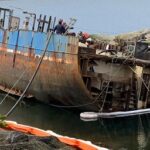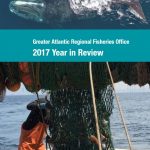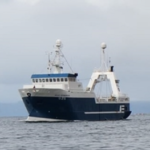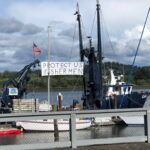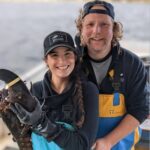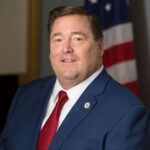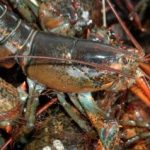Tag Archives: ASMFC
Tomorrow! February 4-6, 2014 ASMFC Winter Meeting in Alexandria, VA – Attend via Webinar! It’s FREE
 Board/Section meeting proceedings will be broadcast daily via webinar beginning at 8:00 a.m. on February 4th, continuing daily until the conclusion of the meeting (expected to be 5:15 p.m.) on February 6th. Agenda and info here Webinar registration here 10:25
Board/Section meeting proceedings will be broadcast daily via webinar beginning at 8:00 a.m. on February 4th, continuing daily until the conclusion of the meeting (expected to be 5:15 p.m.) on February 6th. Agenda and info here Webinar registration here 10:25
Why is the status for American eel considered depleted in U.S waters? ASMFC
 Stock Status – From a biological perspective, much is still unknown about the species. Information is limited about their abundance, status at all life stages, and habitat requirements. According to the 2012 benchmark stock assessment, American eel population is depleted in U.S. waters. [email protected] 11:10
Stock Status – From a biological perspective, much is still unknown about the species. Information is limited about their abundance, status at all life stages, and habitat requirements. According to the 2012 benchmark stock assessment, American eel population is depleted in U.S. waters. [email protected] 11:10
ASMFC – Northern Shrimp Science Meeting – Management of Northern Shrimp Published on Sep 24, 2013

 ASMFC – Northern Shrimp Science Meeting Part 1
ASMFC – Northern Shrimp Science Meeting Part 1
ASMFC – Northern Shrimp Science Meeting Part 2
ASMFC – Northern Shrimp Science Meeting Part 3
ASMFC – Northern Shrimp Science Meeting Part 4
ASMFC – Northern Shrimp Science Meeting Part 5
ASMFC – Northern Shrimp Science Meeting Part 6
2013 Northern Shrimp Assesment pdf
Moratorium Press Release Dec 4, 2013 14:55
Maine Department of Marine Resources to meet with fishermen about reducing elver catch
 ELLSWORTH, Maine — State officials have scheduled two public meetings to get feedback from fishermen about how Maine should reduce its elver landings next spring. more@BDN 20:52
ELLSWORTH, Maine — State officials have scheduled two public meetings to get feedback from fishermen about how Maine should reduce its elver landings next spring. more@BDN 20:52
ASMFC 2013 Summer Meeting Press Releases, Meeting Summaries and Motions
ASMFC Initiates First Coastwide Stock Assessment of Black Drum Data Sought for Assessment
ARLINGTON, Va. -– January 9, 2012 — The Atlantic States Marine Fisheries Commission has begun work on the first coastwide stock assessment of black drum. The assessment will evaluate the health of the black dru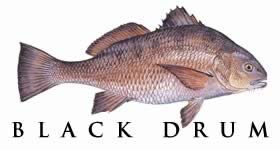 m stock and will be used to inform fishery management activities. The Data Workshop will take place April 15-19, 2013 at the South Carolina Department of Natural Resources, 217 Fort Johnson Road, Charleston, South Carolina. For those interested in submitting data and/or attending the black drum data workshop (space is limited), please contact Jeff Kipp, ASMFC Stock Assessment Scientist, for details at details at [email protected] This e-mail address is being protected from spam bots, you need JavaScript enabled to view it or 703.842.0746. The deadline for data submission is March 15th, 2013. ASMFC Website
m stock and will be used to inform fishery management activities. The Data Workshop will take place April 15-19, 2013 at the South Carolina Department of Natural Resources, 217 Fort Johnson Road, Charleston, South Carolina. For those interested in submitting data and/or attending the black drum data workshop (space is limited), please contact Jeff Kipp, ASMFC Stock Assessment Scientist, for details at details at [email protected] This e-mail address is being protected from spam bots, you need JavaScript enabled to view it or 703.842.0746. The deadline for data submission is March 15th, 2013. ASMFC Website
Commercial shad fishing season opens two weeks early in Georgetown area
The American shad commercial fishing season will open Jan. 15, 2013 in the Georgetown area. This is two weeks earlier than the traditional opening in early February. This change keeps the commercial shad season in compliance with the Atlantic States Marine Fisheries Commission (ASMFC) American shad sustainable fishing plan for South Carolina and the National Marine Fisheries Service (NMFS) mandate to reduce by-catch of Atlantic and shortnose sturgeon.
Read More
Northern shrimp in the Gulf of Maine season slashed 74pc by the ASMFC
The Atlantic States Marine Fisheries Commission (ASMFC) this week set the season’s shrimp catch limit at 1.38 million lbs — down from 5.3 million lbs in 2012 — to protect the shrimp population from overfishing and the effects of higher water temperatures. http://fis.com/fis/worldnews/worldnews.asp?l=e&ndb=1&id=57324
http://www.newburyportnews.com/local/x520556227/Maine-Fisheries-sharply-reduces-shrimp-harvest
Take Action for the Menhaden Fishery: Tell the Atlantic States Marine Fisheries Commission Not to Hurt Working Families Before the Facts are In!
The ASMFC is considering harvest restrictions that could threaten the future of the menhaden fishery and thousands of families who depend on it. Please let the ASMFC know that you care by sharing your concerns below. We’ve done the leg work for you by drafting up a form letter, so please take a moment to sign the attached letter and show the ASMFC that you stand with the menhaden fishery. Please support our Omega Protein Fisherman by signing a letter requesting leniency re proposed catch restrictions. Please sign the letter here: http://letter.savingmenhaden.org http://www.ufcw400.org/2012/11/take-action-and-support-omega-protein-members/
Chesapeake Bay Foundation Continually Misrepresents Status of Menhaden – using biased phrasing in their articles
In reference to menhaden, both articles uses the phrase “the most important fish in the sea,” which is frequently used without proper explanation. Originating from Rutgers University English Professor, Dr. H. Bruce Franklin’s book, The Most Important Fish in the Sea, the phrase stems from entirely qualitative judgements made by the author. There is no scientific evidence supporting the hyperbolic statement that any one species of fish is “most important,” and promulgating this idea represents only the authors’ opinion, rather than any scientific consensus.
Although the Epes article states that “The Chesapeake Bay Foundation is pushing for fair and reasonable limits to rebuild the menhaden population,” the organization does not provide a similar description of the status of the menhaden stock, using biased phrasing in their articles to make the species seem in worse condition than it actually is.
anti menhaden fishing campaign is in full swing. Newport News Daily Press readers are presented with a biased editorial while Saving Menhaden Fisheries dissects and debunks.
Particularly, Mr. Joseph’s depiction of menhaden stock assessments and stock assessment science is riddled with inaccuracies, especially when he writes, “the science now shows what every recreational fisherman in the Bay has known for years, which is that the menhaden fishery has collapsed.” The “science” draws no such conclusion. Both the 2010 and 2012 menhaden stock assessments released by the ASMFC concluded that menhaden were not overfished, with the 2012 assessment measuring the stock at 40 percent above its fecundity threshold. This means that, far from having collapsed, the stock is producing more than enough eggs (40 percent more) to sustain itself.
Shad Resurgence Marks a Cleaner Delaware River
American shad were once so common that East Coast rivers were described as being “black” and “boiling” as tens of millions of fish migrated upstream each spring to spawn. Today, approximately 98 percent of the fish that formed a staple of the Colonial diet have been depleted. In rivers once teeming with shad, a daily catch is sometimes counted in the single digits………Shad — the name comes from the Latin, Alosa sapidissima, meaning “most delicious, or savory, herring” — are just one part of this larger effort, but a critical part. The fish is considered a marker for the overall health of the rivers and tribu……..Protecting the Fisheries…….Historical Comparisons…..Midwater Trawling…….Hydraulic Fracturing……..Removing Dams…….Rescuing the Raritan River…….A Holistic Approach……..Climbing the Ladder….. http://www.wnyc.org/articles/new-jersey-news/2012/sep/24/shad-resurgence-marks-cleaner-delaware-river/





































